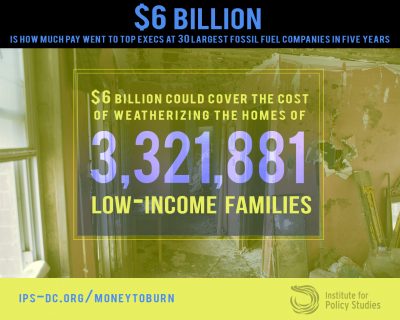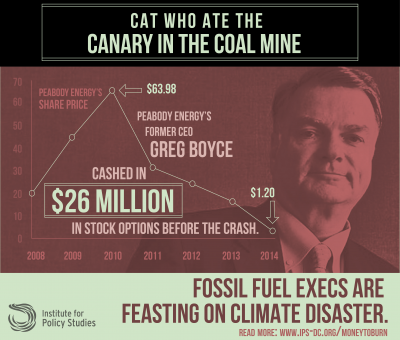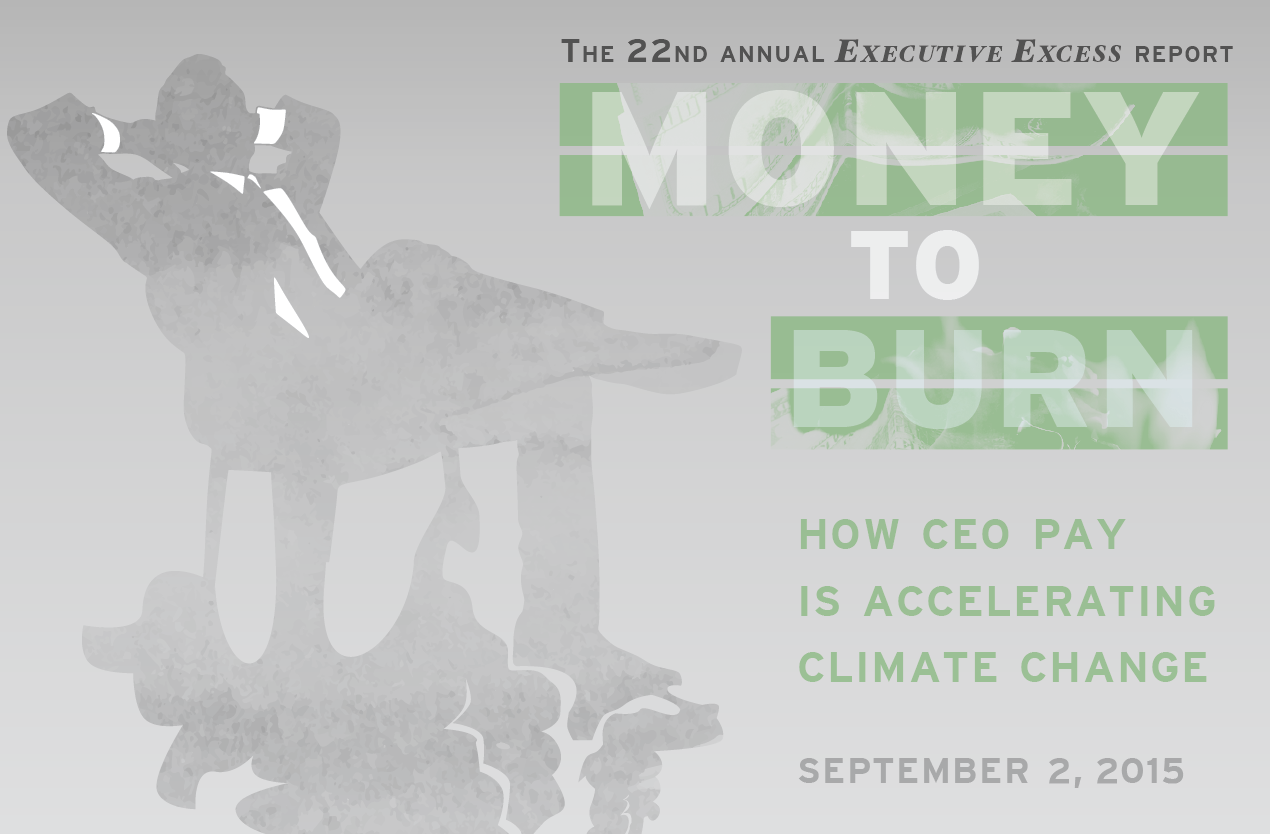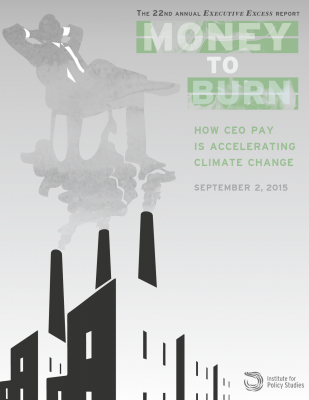This report reveals how our CEO pay system rewards executives for deepening the global climate crisis, based on in-depth analysis of the 30 largest publicly held U.S. oil, gas, and coal companies.
- Beating the S&P 500 average: CEOs of these 30 largest fossil fuel companies averaged $14.7 million in total 2014 compensation, over 9 percent more than the S&P 500 CEO average.
- Five years, $6 billion: These firms’ management teams have taken home $6 billion over the past five years. That would be enough to weatherize 3.3 million homes or double the $3 billion U.S. pledge to the Green Climate Fund, a new institution to help vulnerable nations address climate change.
- Short-termism: Most CEO compensation comes in the form of options and stock grants, a pay stream that encourages a fixation on pumping up share prices. Executives at distressed coal companies Peabody and Alpha Natural Resources cashed in stock options worth $47 million and $33 million, respectively, in the four years before their industry began to implode.
- Buybacks: In 2014, 23 of the top 30 fossil fuel companies spent a combined $38.5 billion on share repurchases. That was six times global corporate spending on research into renewable energy that year. Buybacks artificially inflate share prices, which, in turn, inflates executives’ stock-based pay.
- Pay for non-performance: The top 10 publicly held U.S. coal companies have also been increasing their cash-basedexecutive pay as their share prices have been plummeting. When paychecks grow even as businesses sink, executives have little incentive to shift to a new energy future.
- Bonus incentives: All 13 oil producers on our list of 30 major U.S. fossil-fuel corporations reward executives for expanding carbon reserves.
- Retirement security: Top fossil fuel executives have accumulated company-provided retirement assets worth a combined $1.2 billion at the same time their indifference to environmental degradation has been putting the futures of ordinary people at risk.
This year’s IPS Executive Excess report, the 22nd annual, also includes an updated scorecard that rates recently enacted and proposed CEO pay reforms.
Explore all Executive Excess reports from 1994 onward.
Share the graphics below to spread the word about the ways executive compensation is accelerating climate change:
   |   |

